How to learn industrial dance
How to Dance Gothic
How to Dance Gothic
By Kai MacTane and Antigone
Illustrations by Antigone
You went out to your local goth club in your black velvet frock coat, your hair teased up bigger and rattier than Edward Scissorhands’, and lace dripping from your wrists and throat. You looked fabulous. But as soon as you got on the dance floor, everyone started laughing — eventually, they had to toss you out of the club for being “deleterious to the proper level of angst.”
You need to learn to dance gothic.
It’s not that hard; just learn these simple moves and soon you can blend in with all the other spooky individuals on the dance floor at your local batcave. After all, for such an individualistic crowd, it’s kind of surprising how goths all seem to use the same moves. Maybe it’s something encoded in the Goth Genes™ rather than just lack of originality...
All difficulties and Goth Ratings are on a scale of one (pathetically easy or ridiculously non-gothic) to five (tragically difficult or stylishly über-gothic).
| Difficulty: Goth Rating: | |
| Put your hands in front of your face or maybe upper torso, elbows bent at about a 45-degree angle. Your palms should face away from your body, and your arms, wrists and fingers should be very loose. Now make swirly motions with your hands — the usual is circles going outwards at the top and back in towards the center of your body at the bottom, but some people just wave their hands around seemingly at random in a vertical plane in front of their faces. For maximum goth effect, the rotation of your circles should be a little out of phase — one hand should reach 12 o’clock in its circle a little bit before the other one. It helps if you make slight wavy motions with your fingers while you’re doing this one. These motions need to be slow, however — you don’t want it to look like you’re waving bye-bye; you want it to look like your fingers are gently weaving in an almost hypnotic pattern. Variation: For extra stylishness, you can move the center-points of your two circles simultaneously from one side to the other, letting your hands trail off into some other gesture when they get too far. (This can segue nicely into "Which Way is the Exit?", below.) | |
| Difficulty: Goth Rating: | |
| This one is much like Washing the Windows, but with two differences. Instead of facing your palms away from you, you hold your hands with the palms facing each other, a little closer than shoulder width. Then, instead of moving them in vertical circles, you spiral your hands around each other in a horizontal circle, parallel with the floor. It’s a little trickier, because you have to drop one hand under the other to keep from smacking your forearms together, but you don’t want to make it too obvious — your hands should just spiral lazily around each other with no apparent effort. In fact, “no apparent effort” is a good phrase to describe all these moves. Goth dancing isn’t really energetic; the idea is to be slow, graceful and languorous. | |
| Difficulty: Goth Rating: | |
| Put your arms outward and down at about a 45-degree angle from your body, with your hands around the level of your hips and the palms facing the floor with fingers spread. Don’t lock your elbows. Now, make horizontal circles with your hands, parallel to the floor. Unlike Washing the Windows, you want these circles to go in the same direction as each other, not in opposite directions. Take careful note of the direction of the arrows in the illustration. Don’t worry if your hands try to move forward a bit rather than staying out to the sides; that’s standard for this move. | |
| Difficulty: Goth Rating: | |
| In many ways the signature gothic dance move, this one is so simple, even a corpse could do it. The only real caveat with this one is, since it’s so obviously gothic and so totally butt-easy, you don’t want to rely on it overmuch. Save it for the single moment in any given song where the singer is displaying the maximum amount of angst, and don’t stick in this position for longer than a couple of beats. Otherwise you’ll look like a wannabe. | |
Interlude:
So far, you’ve gotten a bunch of moves with the hands. “What about my feet?” you may be wondering. “Where are the little footprint diagrams?” The answer is, there are very few of those here. There don’t need to be very many. Goth dancing doesn’t generally rely on fancy footwork, for a variety of reasons:
- Many goth women wear long skirts and dresses, flowing gowns, and other Victorianesque garments that practically brush the floor.
 Any fancy footwork they did on those would be invisible. Sometimes, it’s hard to tell if those people even have feet.
Any fancy footwork they did on those would be invisible. Sometimes, it’s hard to tell if those people even have feet. - Many goths, both male and female, wear extremely pointy shoes, sometimes with a lift to the heels. These things are designed for looks, not traction or comfort. When your heels are wobbling and your toes are pinched, you don’t tend to do much fancy stepping.
- Alcohol and yes, drugs, are still a part of the goth subculture. It has occasionally been noted that sometimes the dancers simply stand and sway (the move known as “I Am a Frond of Seaweed”) because that may be all they are capable of at the time.
But there are a few goth foot maneuvers, which can be a very important and valuable addition to your gothic dancing. However, if you’re the “two left feet” type, or your own feet hurt, you can just move your feet in random patterns in time with the beat, and everything will be fine.
| Difficulty: Goth Rating: | |
| Stand with one foot pointing directly forward and the other behind it, angled out at about 45 degrees, as in the illustration to the left. On the next beat, lean forward, transferring your weight to your front foot. Then move the rear foot past the front one, pivoting 45 degrees on the ball of your foot as you do so. This should put you in the exact mirror of the position you were in a moment ago. As you can see in the illustration at right, the foot-pivot happens simultaneously with moving your other foot. “Wow, I could just walk all the way across the floor like this!” you think to yourself. Don’t do it. Take two steps total, maybe three, then reverse it and go backwards. Real goths never use this move to make any real progress; they just go back and forth with it. This is a good one to practice at home before you try it out on a public dance floor in front of dozens of goths who will mock you mercilessly if you accidentally fall on your face when you mess up. | |
My Artificial Hip Joint | Difficulty: Goth Rating: |
| Stand with your weight on one foot, with the other foot out in front of you. The stance should be somewhat similar to just after move 1 in "With Catlike Tread" (above), but your left foot should be pointing directly forward instead of out at an angle, and you needn’t be up on the balls of your feet. However, you shouldn’t have any weight on your right foot; you’re about to lift and move it. Lift your right foot just a tiny bit off the floor, then glide it around and out in a circle, keeping the knee straight and moving your leg from the hip. | |
Testing the Scratching Post | Difficulty: Goth Rating: |
| This one builds on Changing the Light Bulb, above. | |
| Difficulty: Goth Rating: | |
| Put your arms out to both sides, like you’re being crucified or something. As you do, swirl around once or twice, but remember to do it slowly, not quick like a little kid trying to get dizzy. If you do it right, this one can have some of the feel of time wheeling onward, the spin of the earth around the sun, and so on. Variations: This is one the most personalizable of all the moves here. You don’t even need to put both arms out; you can keep one in front of your body (ready to do some other move), or put it behind your back, or you can put it up to your forehead to show how angst-ridden you truly are. | |
"Ow! I Cut My Wrists!" | Difficulty: Goth Rating: |
| Start with "Stuck in My Coffin", above. Move your hands together until your thumbs touch. Now slowly drop your hands forward and down away from your body, keeping your elbows up against your waist. You can let one hand sort of slide across the other as you do this, in a sort of asymmetrical showing-off of the scars on the inside of your wrists. Like “Which Way is the Exit?”, above, this is a great one for displaying how angst-ridden you truly are. However, keep in mind that neither of these will really look quite right unless you actually are filled with angst (or at least can fake it reasonably well). | |
Of course, simply knowing these moves isn’t all there is to dancing gothic-style. While you’re practicing the moves at home, you’ll probably also want to practice stringing them together, so you don’t look like you’re doing one move in complete isolation, then doing another with no connection to it.
One other benefit of learning these moves — and their names — is that you can have hours of fun being a gothic dance critic, rating your friends (and social rivals) on how well they perform, say, “Sweeping the Floor”. And consider the scathing put-downs:
| Morticia: | “I think Simon’s dancing is just wonderful, don’t you?” |
| Vlad: | “He changes the lightbulb far too often, and he just can’t seem to figure out how to sweep the floor properly. ” ” |
Kai MacTane has been webmastering the GothPunk.com(Munity) for six years now. People often compliment his dancing. Antigone personally prefers to dance punk, but she draws good stick figures.
Back to
Industrial dance music | Last.fm
Don't want to see ads? Upgrade Now
Industrial dance is a North American alternative term for electronic body music and electro-industrial music. In general, "industrial dance" is characterized by its "electronic beats, symphonic keyboard lines, pile-driver rhythms, angst-ridden or sampled vocals, and cyberpunk i… read more
Industrial dance is a North American alternative term for electronic body music and electro-industrial music. In general, "industrial dance" is characterized by its "electronic beats, symphonic keyboard lines, pile-driver rhythms, angst-ridden or sampled vocals, and cyberpunk imagery". Since the mid-1980s, the term "industrial dance"… read more
More artists
More tracks
Don't want to see ads? Upgrade Now
More albums
Related Tags
Dances
Author: Pavel Gather
Psychologist, Lecturer Salsa and Tango
Dances
Author: Pavel Pavel
Psychologist, Lecturer Salsa
on At the start, you always want to get a quick result.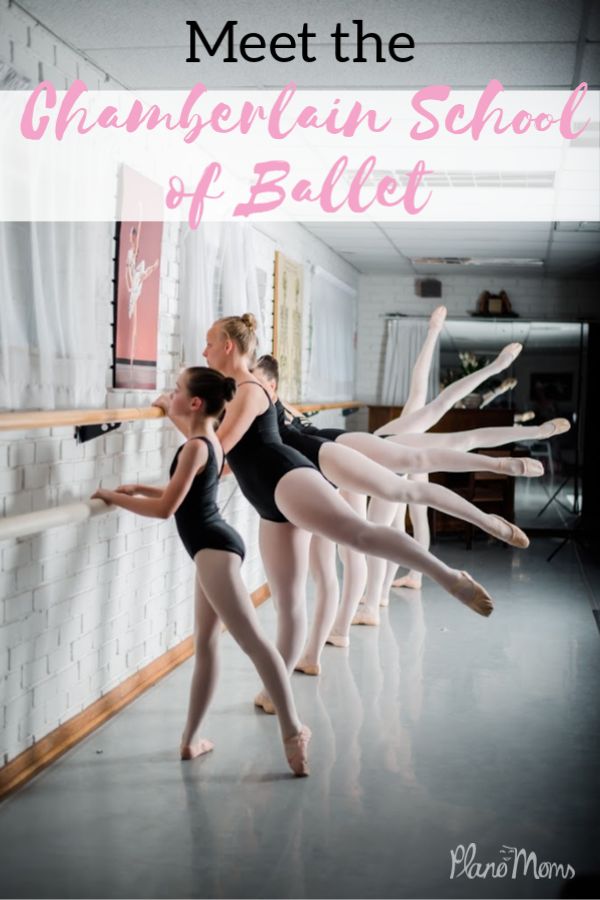 When it doesn't happen, the hypothesis arises that everything takes time. After a conditionally acceptable time, humility comes to mastering pair dances, which, perhaps, is not given, and I will just do what I learned somehow.
When it doesn't happen, the hypothesis arises that everything takes time. After a conditionally acceptable time, humility comes to mastering pair dances, which, perhaps, is not given, and I will just do what I learned somehow.
This is the most common story of those who believe that the mere act of attending a pair dance class is enough to learn how to dance.
Absolutely not. If you want to really dance well, you have to make an effort outside of the dance class. A good teacher will definitely be needed, but the initiative should be on your side.
1. Listen to music
The most common and accessible advice that is given already in the first lessons. And it definitely works. Music creates a certain atmosphere of the dance and intuitively you want to move to it. It doesn't matter where you listen to music - in the car, on headphones while walking or doing household chores.
An addition that will help you dance better is your active participation in the music. Sing along, dance or simply beat musical accents with any free parts of the body. In the subway, for example, it is enough to tap out bright moments with your fingers, in the car to sing along with sounds, and at home you can jump for pleasure.
Sing along, dance or simply beat musical accents with any free parts of the body. In the subway, for example, it is enough to tap out bright moments with your fingers, in the car to sing along with sounds, and at home you can jump for pleasure.
2. Watch videos of good dancers
It's complicated, but also obvious. It’s more difficult, because without recommendations from more experienced dancers, unfortunately, it’s not so easy to find a good quality video on the net (I mean not the resolution quality, but the content itself).
Meaningful video viewing is about building an understanding of HOW dancers make a particular impression on a partner or viewer. Technology is at the heart of everything. Understanding how the pros do it is a big step forward.
It is important to distinguish a show from a disco dance, a staged performance from an improvisation, a stylized dance from an authentic one, etc. Ask for recommendations and dance teachers will always throw off a couple of videos of worthy landmarks.
Tango Z. Showreel.
Online modern tango courses
Tango nuevo is the most advanced version of tango. We can quickly learn to dance from zero to a steep level.
| View details |
3. Dance in salsatecas/milongas/discotheques
A very delicate moment when it is worth coming to the first party. From a technical point of view, most students in 1-3 months have a sufficient set of figures and techniques to come and dance calmly. Psychologically, the same moment can be stretched out for an indefinite time. After all, it is imperative to “not lose face”, “learn more figures” and be sure what to do in case “there is an unfamiliar movement”.
In fact, the partygoers don't really care (except for a small layer of non-professional teachers who want to help inexperienced dancers by treating them as customers in the future). It is important to come and try dancing after a month of classes. You can only with friends or guys from your group. This will be enough to feel the adrenaline and inspiration from the dance.
You can only with friends or guys from your group. This will be enough to feel the adrenaline and inspiration from the dance.
4. Dance with partners or partners not of your level
The conventional wisdom that you need to practice in groups of your level does not withstand the test of experience. Perhaps now your eyes widened in surprise, and you want to meaningfully read the phrase again. Yes, you saw everything correctly: when you dance with a partner of your level, you don’t grow anywhere.
It's important to understand that not only does it work one way and you have to dance with cooler dancers, but it works even more effectively the other way. It is no coincidence that teaching pair dances dramatically raises the level of the teacher himself. You have an endless stream of very beginner dancers.
How it works. A more experienced partner needs to be "stretched". It's easy and obvious. With beginners, you need to take more initiative on yourself, see the general pattern of the dance more widely, turn on and insure more, try to be an example and be more careful. The quality of interaction begins to grow significantly. And wonderful partners too.
The quality of interaction begins to grow significantly. And wonderful partners too.
Dancing with partners of your level doesn't make you grow. Dance with both beginners and more advanced dancers
Dominican Bachata Women's Style Online Course
Want to learn how to hypnotize those around you with the most appetizing part of your body? On the course we will tell you all the secrets.
| Interesting |
5. Learn to dance for a partner and for a partner
Turks and Argentines are one of the best partners in the world. In Russia, partners are highly valued. Why? The answer is simple. In Argentina and Turkey, it is not questionable for men to ask another man to lead in one piece or another and give feedback on the quality of the lead. For them, it will be a great shame to hear moralizing from a partner, or even more so to be known in the community as an insecure partner.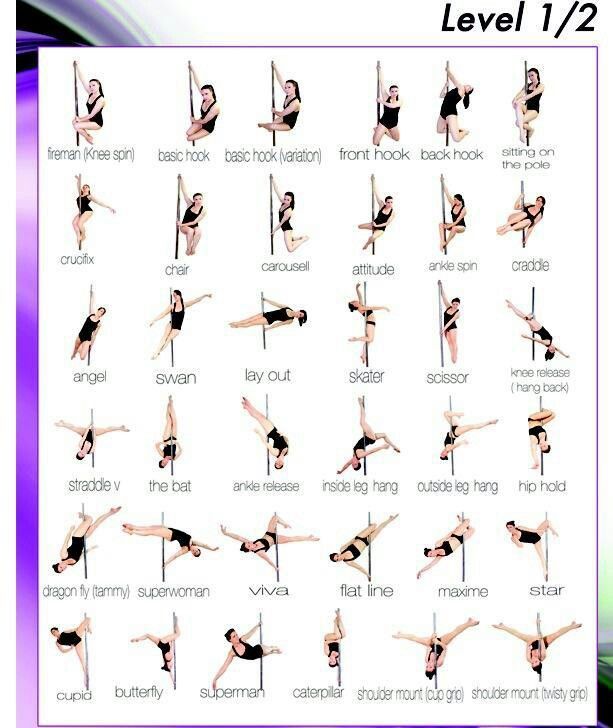
In Russia, due to the constant, often far-fetched, opinion that there are more women in pair dances, partners calmly get up and study their partner's part. Such partners then grow into very cool dancers and teachers. In no case do this at parties, only in class. Here we are talking only about the learning strategy. At parties, be yourself.
6. Do not memorize the links
Always try to look deeper and understand the through principle and idea of movement. Understanding what and how is done will make it possible to independently generate any sequences and chips.
Human memory is limited and there will always be a moment when something will escape and your repertoire will be limited by the size of RAM.
In Argentine tango, for example, there are seven levels of movement construction that, when mastered, will allow you to make millions of combinations. And how many dance sequences can you really remember? In rueda, more than 150 figures dance in a rare circle. It's hard to keep more in mind.
It's hard to keep more in mind.
7. Develop your body
Many years of experience in teaching couple dance shows that as soon as everyone pairs up in a class, any progress in individual style ends. But it is the individual style that distinguishes everyone at the disco: partners change, and style is always with you.
The body as the main instrument of dance must be very plastic, responsive and emotional. Surprisingly, not all pair dance schools have a general physical warm-up. It is vital to tune the body and understand how it works.
You can always train extra and concentrate more on the basic steps, as their true value is as body work. The sequence of steps is, in fact, the simplest thing that can be in pair dancing. The quality of individual performance determines the craftsmanship.
8. Try on the images of inspiring dancers
A psychological life hack for those who have already mastered the steps, but still feel that there is not enough brightness and drive. Most are terribly afraid of being someone else's "clone". Here the action is the same as under the influence of hypnosis - the more you resist, the more you plunge into an altered state of consciousness.
Most are terribly afraid of being someone else's "clone". Here the action is the same as under the influence of hypnosis - the more you resist, the more you plunge into an altered state of consciousness.
With a high degree of probability, you are already dancing like someone else's "clone". A meaningful fitting of someone else's image is that you mentally take the image of the one who inspires you (inspiration is critical in this case) and "put on" yourself. Then you start dancing and trying to feel in general how it is to be able, for example, to be the best partner or the sexiest partner in a disco. This is much more difficult than it seems. But it works extremely efficiently.
9. Dance to offbeat music
Habitual rhythms keep you tight. Tango salon or speedy timba leave little room for experimentation and fantasy. Pattern dancing is always noticeable and is reserved for beginners.
The truly new is born outside of the usual. Look for places to experiment. If there is no place, organize self-training. The main thing is not to get carried away, because music determines the style. We bring something new to pair dances, rather than trying to change them.
Look for places to experiment. If there is no place, organize self-training. The main thing is not to get carried away, because music determines the style. We bring something new to pair dances, rather than trying to change them.
Search, improvise, don’t be afraid to go beyond, develop in different directions, be inspired by music atypical for the style
10. Try your hand at basic dance directions
dances exist according to their own non-choreographic laws.
This is the deepest delusion, which has turned into a ceiling for the qualitative development of partner dances. After all, all professional dancers, for example, in salsa or bachata, build their ideas on the basic choreographic principles.
Do not think that choreography is only applicable on stage. Any meaningful movement of the body can be choreographic. In general, try classical or modern choreography. Basically, hip-hop can work too.
11. Look for battle sensations
Pair dances return us to an active position of manifestation of our body. As in the days of our ancient ancestors, we impress the members of the opposite sex by how dexterous, hardy, sexy, etc. we are. Modern laws of the jungle in the entourage of large cities.
If you look around the dance floor, it becomes clear that the majority are clearly herbivores (not in the sense of vegetarians, but in relation to those around them). I am sure that predators are always more interesting in terms of the attractiveness of the image - try to find a counterbalance among herbivores, for example, a cat woman or a lion man.
The conversation is about an internal position, not about aggressiveness. Lability and lack of control are inherent in adolescents, and not in adult self-sufficient people.
Accordingly, even a training or friendly battle gives, on the one hand, practical skills - to make a bright sequence of movements, bring an idea to a climax, show a spectacular feature, on the other hand, develops the psychological basis of the dance - self-confidence, resistance to extraneous attention, self-control and self-control in complex elements.
12. Communicate with professionals
The environment shapes the internal position. Basically, real passionaries of the dance community are ready to openly talk, discuss and support the development of dance in every possible way. Universal principles and the ideas they articulate have a much longer and more practical perspective than meets the eye.
Accept that, for example, behind the words "listen to your partner" is not only a beautiful metaphor, but also a practical skill to literally listen to your partner. At the same time, always treat every thought, even the most respected teacher, as a private opinion.
Your skill will lie in finding the scope of the idea even in conflicting opinions. Most often, the contradiction is speculative and the truth lies in the angle of perception or situationality.
Your dancing growth will stop sooner or later. This can happen at the level of three basic steps or years of experience in teaching and show performances. Regardless of your level, the suggested 12 life hacks can get you off the ground and greatly accelerate your dance growth. There is no way here without your motivation and activity. Take your dance development into your own hands. 9Ol000 Dangerous sexuality
Regardless of your level, the suggested 12 life hacks can get you off the ground and greatly accelerate your dance growth. There is no way here without your motivation and activity. Take your dance development into your own hands. 9Ol000 Dangerous sexuality
Salsa: destroyers of stereotypes
Couple dancing as a source of strength.
Self-destruction of the couple dance community
The Salsa series as a mirror of the community
Mamita Fridays: salsa, bachata
Destroying the myths about leading pair dances
Does dancing make us better?
The seven deadly sins of teachers
Why we will never dance bachata like the Dominicans
Why tango?
Dispute over musicality
Selection of dances according to alcohol preferences
Where to find inspiration for dancing?
Terrible tango nuevo
Distribution of roles in a salsa party
Argentinean tango through the eyes of a salsa dancer
Is there a predisposition to dancing?
Which is more effective: individual or group lessons?
Sexual overtones in partner dancing
How to learn street dancing without leaving home
February 5, 2017 Life Sports and fitness
Street dancing is not at all the lot of the elite, endowed with natural plasticity and great talent of people. And not even those who have the willpower to regularly attend a dance studio. You can learn how to move beautifully and correctly without leaving home.
And not even those who have the willpower to regularly attend a dance studio. You can learn how to move beautifully and correctly without leaving home.
Street dancing is a magnetically mesmerizing spectacle. Surely you have seen how the dancers turn into robots, simulating mechanical intermittent movements, or flutter above the ground, magically hardly touching it with their feet. Here is a video of one of the most famous street dancers Marquis Scott:
All this seems so impossible, out of reach. I would like to immediately dispel the doubts that most viewers have when watching the video.
Common misconceptions about street dancing
1. This guy is a genius, because he improvises
I'll tell you a secret: everything you see here, every tiny movement, is the result of long training and repeated repetitions. Do you see how easily, for example, a “wave” passes through the Marquis’s hand? Before he could do it, he:
- flexed his wrist a thousand times;
- flexed his elbow a thousand times;
- pushed his shoulder forward a thousand times;
- connected these movements in sequence tens of thousands of times.
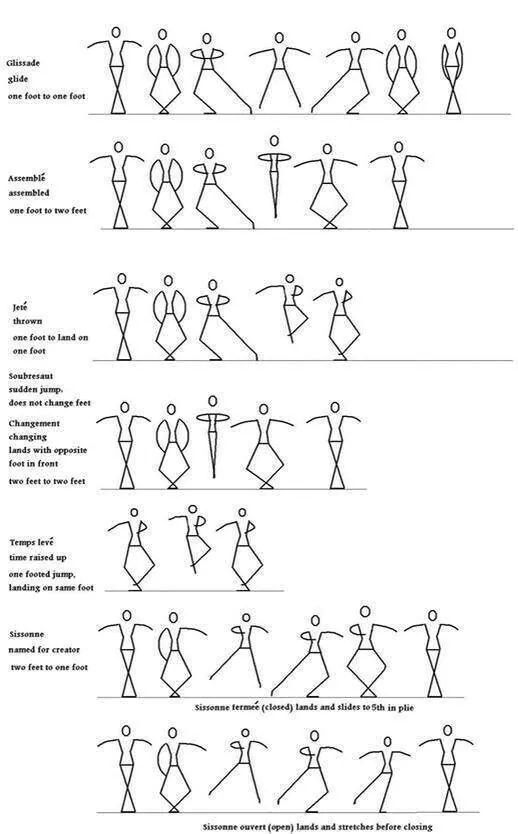
Over time, awkward hand rotations turned into a smooth wave. Actually, here, for clarity:
And so with any element that you see in the dance. Each of them first goes through a long process of cutting and settling in the motor memory of the body. Improvisation is a free combination of such elements.
2. This guy has a talent, not everyone is gifted like that
The movements of each dancer, no matter how free and light they may seem now, were initially just as timid and clumsy as yours. The same Marquis Scott, whom many will call a genius, before he started dancing, moved no better than anyone else. Dance is not some school of magic that is inaccessible to mere mortals.
Dance is first and foremost a technique. Technique worked to perfection.
Do you hear music, try to move to it, but something extremely clumsy comes out? But the body of the masters "dances by itself"! But how can your body dance if it doesn't know how to move? First teach it them, and then it will perform the dance for you. And everyone can handle it.
And everyone can handle it.
3. I will never succeed in this way
With desire and diligence, everyone will succeed. Get rid of conceited thoughts about your exclusivity.
You must have thought “Wow! I wish I…”, but you don’t even dare to continue this thought to the end, because, of course, “such a talent is not given to everyone, but even more so to me.”
Most likely, many of you watched the video, went to the mirror, tried to portray a "wave", instead of it you got a real storm with 11 points on the Beaufort scale, laughed and went on with your own business. For some reason, people think that a street dancer is gifted by nature. No, in the same way, he once approaches the mirror, tries to do something and laughs at failure. Only then does he approach the mirror again and again.
Street dance in most cases is an improvisation based on a free combination of elements of various dance styles honed to perfection.
Yes, street dancing is an extremely broad concept that includes breakdancing, locking, house and much more.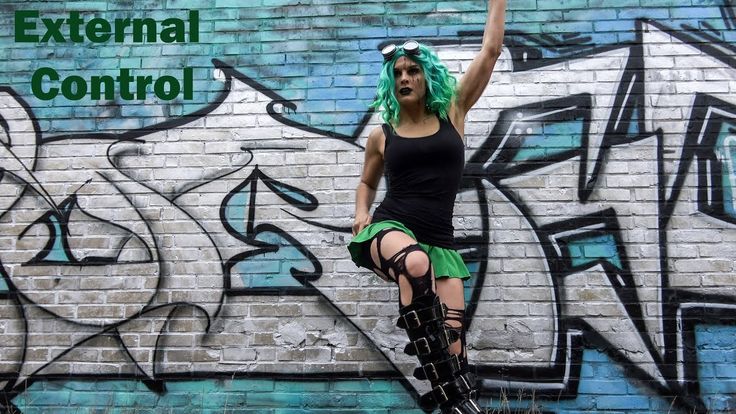
So, you understand that there is no magic and mystery in the masterful dance, and the secret of its lightness lies entirely in the development of various movements? Already good. Let's go further.
Technique
What is technique development?
- Selecting a specific movement.
- Its breakdown into elementary components.
- Multiple repetition of each of them separately.
- Their serial connection in the desired movement.
- Repetition of this movement, using it in conjunction with others.
Repetition, repetition, repetition - that is the basis of technique. Why? Because that's how our body learns. At first, the path to each movement will lie through great willpower, control and concentration. Everything will happen slowly. But with each repetition, the new movements will be adapted by the mechanisms of your motor memory. And in the end, the movement will be performed naturally and easily, like a wave of a hand.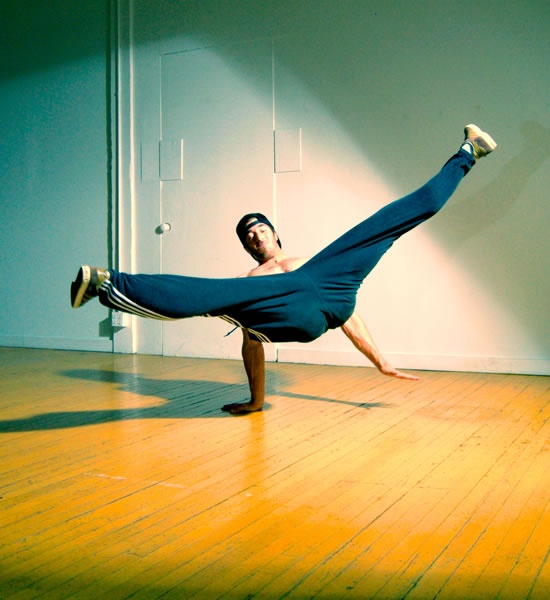 You don't have to think about it. It's like learning to ride a bike.
You don't have to think about it. It's like learning to ride a bike.
So, mastering the dance is available to everyone. But the path to it lies through the development of technology. And work on technology is labor, long, difficult and sometimes makes you want to cry.
But there is good news.
You can work at home. And most importantly, it will be interesting for you to work.
Because any routine, unpleasant work gets a motive and becomes much more interesting when it brings some result. And the sooner this result manifests itself, the more noticeable it is, the greater the desire to continue the person lights up.
Believe me, you can learn the simplest techniques of magical plastic surgery in the shortest possible time without leaving your home. Of course, you will not become Marquis Scott so quickly, but you will definitely succeed in surprising your friends and relatives, and even yourself. Let's take the mentioned "wave". By following the instructions from the second video of this article every day for at least 15 minutes, in a couple of weeks you will make the movement correctly, quickly and with the necessary automaticity.
By following the instructions from the second video of this article every day for at least 15 minutes, in a couple of weeks you will make the movement correctly, quickly and with the necessary automaticity.
Dancing at home
Now about the main thing. The studio has a professional choreographer who teaches and shows the movements. What about at home? And at home there is YouTube, where no less professional dancers have already posted thousands of training videos.
If you are one of those people who has the thought “Wow! I wish I…" when watching the first video, the action plan is as follows: you go to one of the YouTube channels below, watch dance videos and determine whose style you like, open the training videos and, getting up from your chair, without leaving your monitor (well, if there is a mirror nearby), you start doing what is shown in them. That is, repeat, repeat, repeat movements.
Don't worry about the small space: we are not learning the waltz, and you will have enough space to learn the basic movements and perform simple connections. Here, of course, a lot depends on the dance genre. For example, you can master the bottom break only if you have a lot of space and slippery flooring.
Here, of course, a lot depends on the dance genre. For example, you can master the bottom break only if you have a lot of space and slippery flooring.
Lifehacker chose the most undemanding styles in terms of square area, united under the name dubstep. It doesn't matter if you like this music: the elements of the style itself can be used in completely different ways.
1. Here is a wonderful school of Alexander Dragon, in which you will find a huge number of videos teaching all the elementary movements of completely different directions, many lessons, links and dances. This school has, perhaps, the most saturated channel on YouTube, which can completely replace classes in the studio.
Don't be put off by the abundance of videos. And in no case do not immediately take on links like this:
To successfully do what Alexander does, you first have to learn the basic principles and movements of waving, tatting, popping and so on.
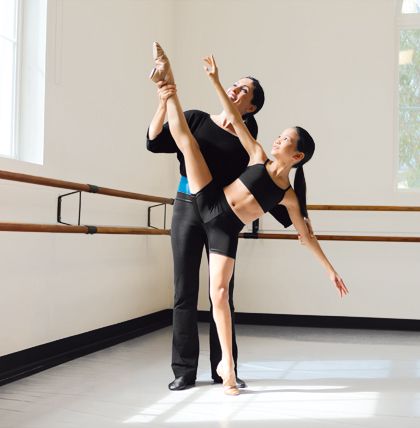 Don’t move your circles independently — that just winds up looking silly.
Don’t move your circles independently — that just winds up looking silly. 
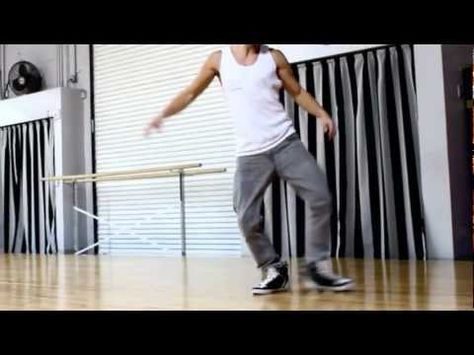 You just fold your forearms over each other in an X shape across your chest, like you were a corpse in its coffin. You’ve seen Bela Lugosi do this hundreds of times, just before he sits up and says "Good eeeeeve-ning."
You just fold your forearms over each other in an X shape across your chest, like you were a corpse in its coffin. You’ve seen Bela Lugosi do this hundreds of times, just before he sits up and says "Good eeeeeve-ning." 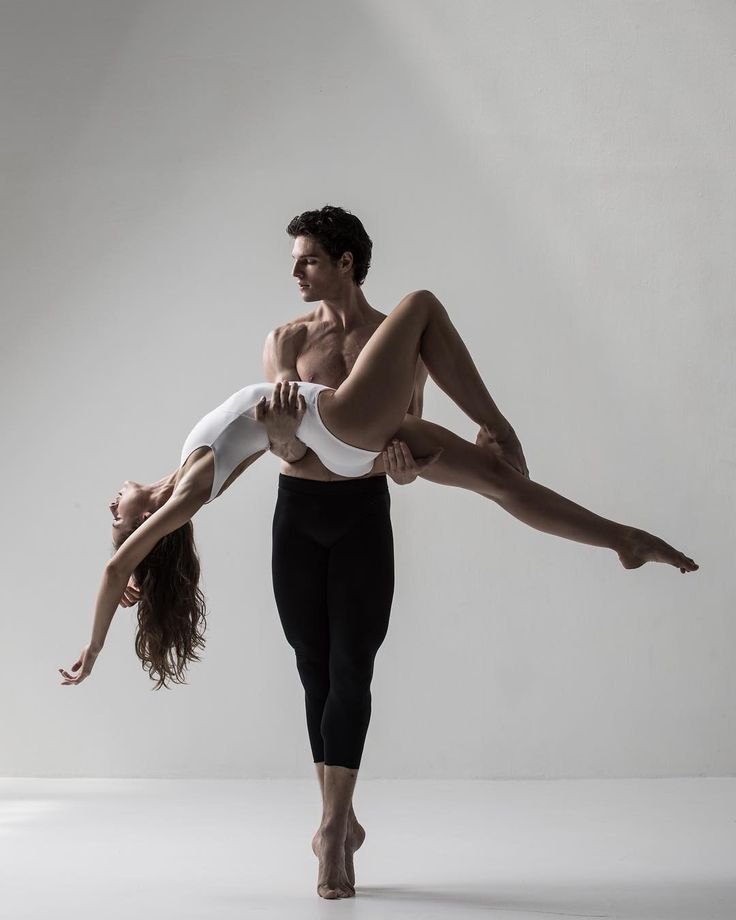 A little more than half of your weight should be on your rear foot. Now lift up onto the balls of your feet. In time with the music, lift your front foot and daintily place it a bit farther away from your body — you’ll need to bend your rear knee quite a bit while straightening the front leg.
A little more than half of your weight should be on your rear foot. Now lift up onto the balls of your feet. In time with the music, lift your front foot and daintily place it a bit farther away from your body — you’ll need to bend your rear knee quite a bit while straightening the front leg.  On the other hand, public mocking is great for racking up angst points.
On the other hand, public mocking is great for racking up angst points.  Start from the same position, with your hands facing each other in front of your face. Then, instead of swirling them around each other in a horizontal circle, you swirl them in vertical circles around each other. Your hands should be moving away from you at the top of the circle and toward you at the bottom. As you make these circles, slide your hands higher and higher, then when you can’t go any higher, start bringing them back down toward your chest... but don’t reverse the direction of the circles you’re making.
Start from the same position, with your hands facing each other in front of your face. Then, instead of swirling them around each other in a horizontal circle, you swirl them in vertical circles around each other. Your hands should be moving away from you at the top of the circle and toward you at the bottom. As you make these circles, slide your hands higher and higher, then when you can’t go any higher, start bringing them back down toward your chest... but don’t reverse the direction of the circles you’re making.  It can also come in handy in case some weirdo DJ puts on Dead or Alive’s “You Spin Me Right Round, Baby”. (“Right ’round like a record, baby, right ’round, ’round, ’round.” Oh, yeah.)
It can also come in handy in case some weirdo DJ puts on Dead or Alive’s “You Spin Me Right Round, Baby”. (“Right ’round like a record, baby, right ’round, ’round, ’round.” Oh, yeah.) 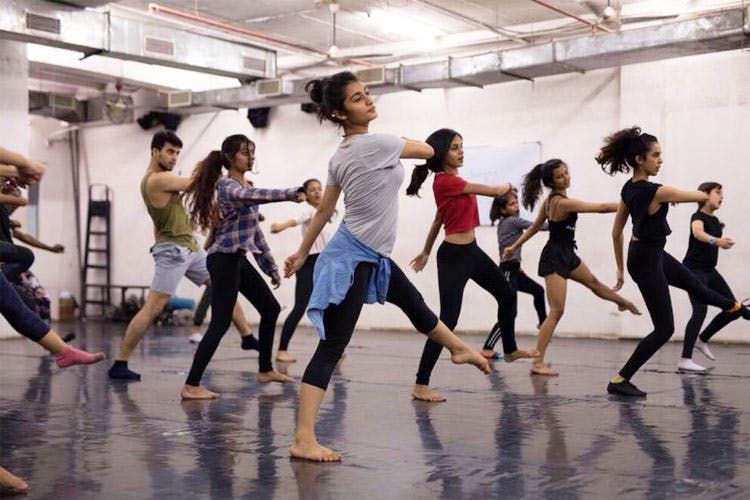





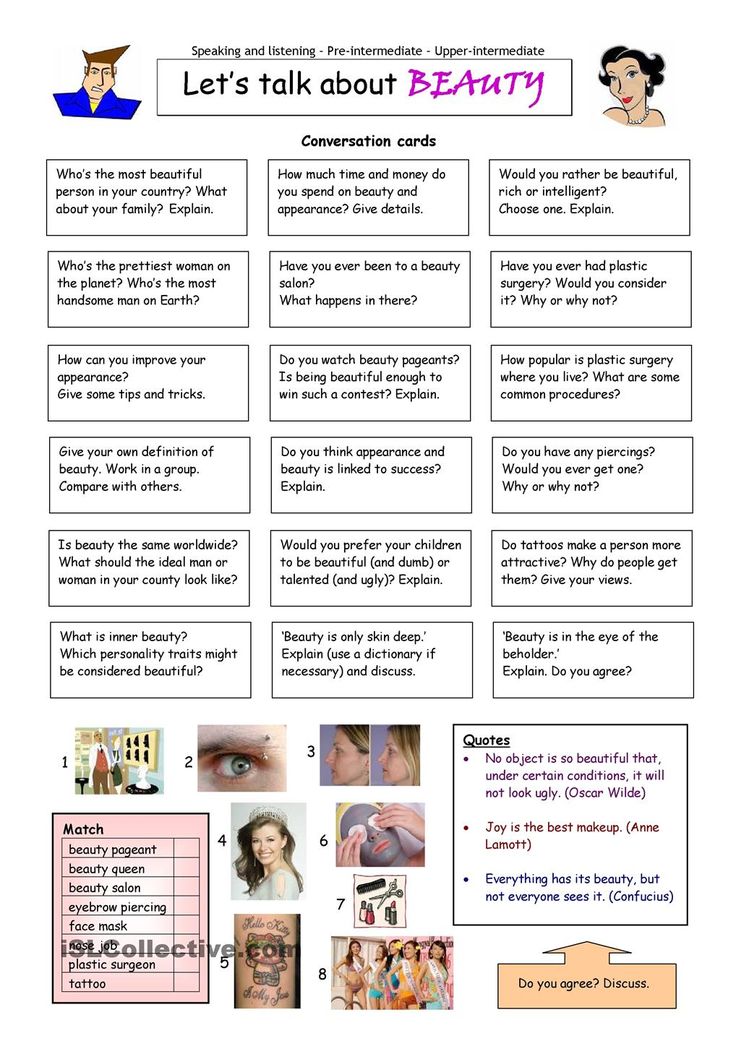

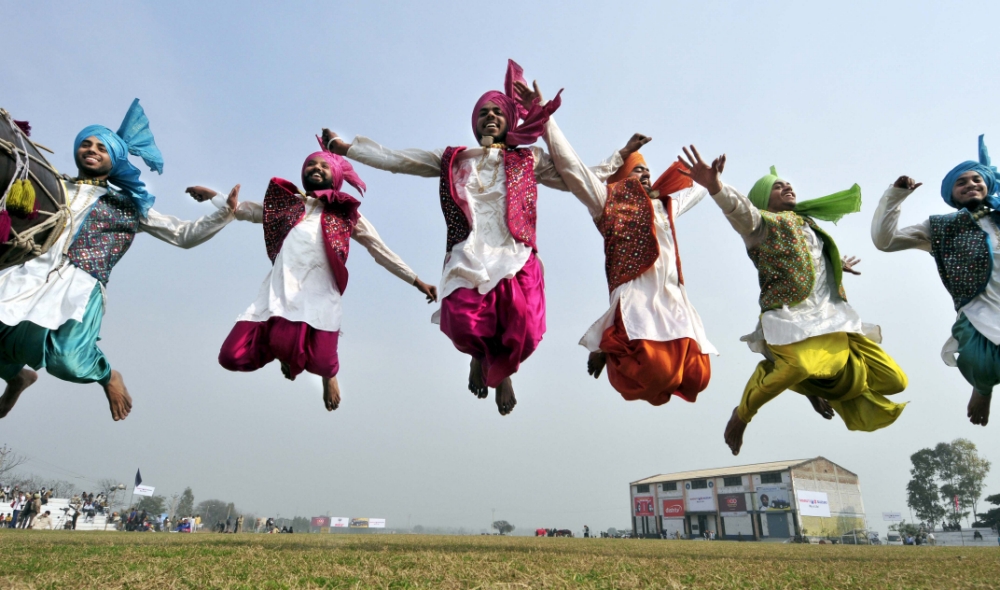
-Step-16.jpg/aid1640374-v4-728px-Shuffle-(Dance-Move)-Step-16.jpg)


